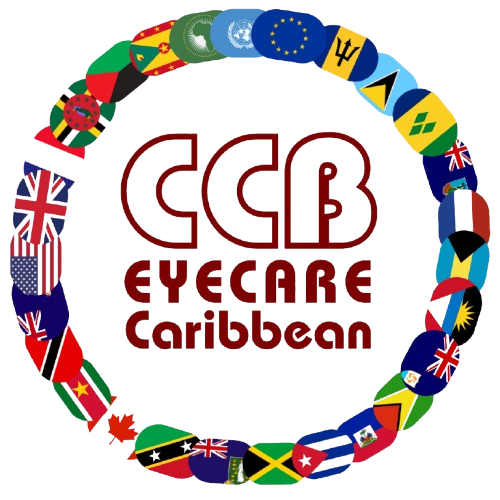{youtube}TGekIS10jVo{/youtube}
“We have a bright future as far as Eye Care in Guyana is concerned and with the cooperation between Eye Care Guyana – the Ministry of Health is positioned to go to higher and higher heights”.
With a population of just under 800-thousand, approximately 30,000 adults and children in Guyana are blind or have low vision. The priority eye diseases include Cataract, Glaucoma, Refractive Error and Diabetic Retinopathy.
For the Ministry of Health, eye care has been on the front burner for the past several years. The Caribbean Council for the Blind (CCB) through Eye Care Guyana has spearheaded several programmes which include the establishment of Vision Centres and the training of Refractionists and Optometrists at the University of Guyana. In 2013, the determination of Dr. Bheri Ramsaran, the current Minister of Health, to keep eye health a priority has not waned, stating that this emphasis initially stemmed from Mission Miracle, an Eye Care Programme that was a collaboration between the Governments of Guyana and Cuba.
“That campaign showed us how much more needed to be done for eye care, and happily, along with other organizations like Eye Care Guyana which was doing some work before, we decided to strengthen the partnership that all stakeholders could participate in providing Eye Care Services to the grass roots. So the campaign was to take screening opportunities right down to the villages including the Amerindian Communities.”
With this in mind, the Government saw the need to create sustainable capacity in the country – meaning that training would be key. Besides training Refractionists and Optometrists, the Caribbean Council for the Blind through Eye Care Guyana has also made it possible for local Ophthalmologists to train at overseas Universities.
“Eye Care Caribbean and Eye Care Guyana has provided us with the opportunity to train at least three so far.The arrangement is that Eye Care Guyana through their international connections, will provide a few more scholarships and we are looking forward to that continued participation. “I am hoping that with this cooperation, over the next few years, we will have a growing number of Guyanese Ophthalmologists who could gradually replace the Cubans and the other Specialists. Not that we won’t rely on support from the other countries, but we need our own national cadre too.”
Education
In recent years, the University of Guyana with support from the Caribbean Council for the Blind and Eye Care Guyana, launched a Bachelor of Science Degree Course in Optometry marking a real breakthrough in the development of Eye Health Professionals in the region.
The four-year Course which is the first of its kind in the Caribbean has gone a long way in training the Eye Health Workers of the future who are needed in the region’s fight against avoidable blindness.
Considering the commitment to Eye Health the Ministry of Health has also rolled out a campaign to rid the population of Cataracts and Dr. Ramsaran believes the aggressive approach has borne fruit.
“Cataract is an endangered disease in Guyana it is difficult to find Cataracts here, because of the massive campaign that we did. In years gone by, we sent thousands to Cuba when we did not have our local capacity, now that we have created our local capacity at the National Ophthalmology Hospital, we continue to mop up cataract and whatever other Eye Diseases exist in the country. To do so we have continuous outreaches even to the most remote Amerindian communities. So our success has been the grass roots approach and the willingness of our Refractionists – trained by Eye Care Guyana, to go out there.”
Incidentally, Guyana was one of the first countries to sign the Vision 2020 Right to Sight Declaration, the country was also the first to implement a Vision 2020 Strategic Plan in 2013.
Based on this commitment, Eye Health Services are available at several Hospitals across the country including the Diamond Hospital. “The Diamond is a gem, that is the Centre where we refer patients, from a very densely populated part of Guyana’s coastal area for screening. Every Tuesday and Thursday a large number of people go to Diamond.
Whenever they are screened and a diagnosis of an eye disease is made that needs surgical intervention. They are given a special day to go on a minibus free of cost, but they are also tested for pressure and sugar at the Diamond Hospital so no one gets on a bus who cannot be operated on-on the same day at the National Ophthalmology Hospital. It has raised the consciousness of Eye Care. The strategy is to continue to train workers at the local level”.
Primary Eye Care
The Government of Guyana is also focused on Primary Eye Care as the first step to giving the majority of the population access to quality Eye Health Services.
“The more Refractionists and Optometrists there are, throughout the Caribbean, the more time Ophthalmologists will have to focus on the management and treatment of the main causes of preventable blindness across the region.We need to take eye care to the Primary Health Care level before you come up to the level of seeing the Specialist you must be able to intervene to prevent the complications,” the Health Minister added.
Officials within the Ministry of Health are proud of the progress made so far and say the work will continue with the help of the Caribbean Council for the Blind, Eye Care Guyana and International Partners.
“Eye Care Guyana has partnered with the Ministry of Health over the past few years to strengthen Eye Care Services in the country, Eye Care Guyana has been able to facilitate the Ministry of Health in the further training of Doctors, who were already employed by the Ministry. We have a bright future as far as Eye Care in Guyana is concerned and the cooperation between Eye Care Guyana and the Ministry of Health is positioned to go to higher and higher heights”.
